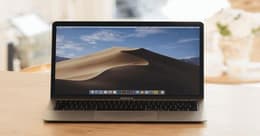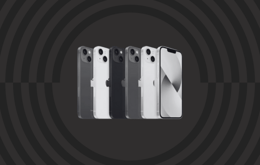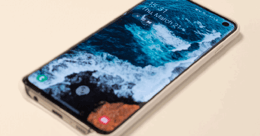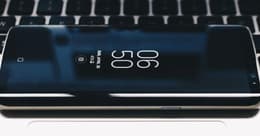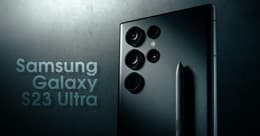The Pixel 6 is a well-priced smartphone with some impressive features. Let’s see how this edition holds up to previous models, newer models, and other competitors.
The Google Pixel 6 at a glance
Launched in October 2021, the Google Pixel 6 is a larger, sleeker, and more powerful device than its predecessors. It might lack the telephoto lens bestowed upon the Pixel 6 Pro, but with a 6.4-inch screen, a unique new design, fast 5G, and excellent cameras, you could certainly do worse than this smartphone – particularly at its price point.
It was the first phone on the market powered by Google’s Tensor chipset, which drives more machine learning, elevates its photo-taking capabilities, and ultimately makes the phone smarter.
Let's start by taking a look at the most important specs for the Google Pixel 6 and then dive into these in more detail.
Google Pixel 6 spec table
Price on Back Market (Updated Aug'23) | From $175 (save $424.99 vs cost of new) |
|---|---|
Screen Size | 6.4-inch |
Processor | Google Tensor with Titan M2 |
RAM | 8GB |
Storage | 128GB | 256GB |
Rear Cameras | 50MP wide-angle (ƒ/1.85), 12MP ultrawide (ƒ/2.2) |
Front Camera | 8MP (ƒ/2.0), 84-degree field of view |
Zoom | 7x Super Res digital |
Video | Rear: 4K and 1080p Front: 1080p at 30fps |
Battery | 4614 mAh |
Dimensions | 6.2 x 2.9 x 0.4 inches |
Weight | 7.3 ounces |

Google Pixel 6 pros & cons
Pros
Great price
Unique design
Brilliant cameras
Tensor chipset makes the phone smart
Cons
Limited battery life
No face unlock
No telephoto lens
Limited storage
Google Pixel 6 design
When it was first released in October 2021, the Google Pixel 6 made waves with its snazzy new design. Its chunky, horizontal camera bar is leaps and bounds away from the designs of its predecessors (and every other smartphone for that matter), and its two-tone look certainly means it stands out from the crowd.
We think it looks sleek, and the added bonus is that the sticky-outy camera bar stops the phone from wobbling when you set it down on its back. It comes in a choice of 3 colorways, all with that signature two-tone aesthetic. Pick from “Kinda Coral”, “Sorta Seafoam”, and “Stormy Black”.
It's fairly hefty in the weight department – at 7.3 ounces it’s heavier than the Pixel 5 (5.3 oz) and the Pixel 7 (6.95 oz), as well as the iPhone 13 and the Galaxy S21. Because of the camera bar, it does feel a little top-heavy, and you’ll want a firm grip when holding it in one hand to avoid any tumbles.
It’s worth noting here that the Pixel doesn’t support face unlocking – you’ll need to upgrade to the Pixel 7 to make use of that feature. In the meantime, fingerprints at the ready!
Google Pixel 6 display and screen

With its 6.4-inch screen, the Google Pixel 6 is a larger-than-average phone, close in size to the iPhone 11 Pro Max. It has the largest screen of all the Pixels (bar the Pixel 6 Pro and the 7 Pro with their 6.7-inch screens), up from the 6-inch screen of the Pixel 5. But we’d say it’s just on the right side of big, still fitting comfortably in your pocket or bag.
Another big update (as seen on its predecessor too) is its variable 90Hz refresh rate, which makes scrolling, browsing, and animations far smoother. It scales up to 90Hz when your on-screen activity would benefit from that sweet, sweet smoothness, then drops back down to 60Hz to preserve battery at other times.
It’s an OLED, which means it's capable of better contrast and vibrancy. In fact, it’s like a window into a technicolor wonderland! And with a Full HD Plus resolution of 2400 x 1080 pixels, it's sharp enough to make even the tiniest details pop. It’s not quite QHD, but when we compared the Pixel 6 and the pricier Pixel 6 Pro – which does have a QHD display – side by side, we couldn’t spot much difference in detail at all.
Google Pixel 6 performance and battery life
As with most phones, it's the details you can't see that really drive performance. The Pixel 6 comes with a respectable 8GB of RAM and either 128GB or 256GB of storage, and for this model, Google has upgraded to the Tensor chipset, shunning Snapdragon in favor of its own in-house technology. The result? A lightning-fast phone.
Think of the Tensor chipset like a powerful engine in a car. Just like the engine powers the car and makes it go fast, the Tensor chipset powers the Pixel 6 and makes it run smoothly and perform tasks quickly. You'll experience snappy app launches, smooth multitasking, and fast response times – especially compared to the Pixel 5 with its Snapdragon 765G chipset.
The Tensor chipset harnesses the power of AI to enable better performance across a range of machine-learning tasks. These include advanced speech recognition, instant translation, and a bunch of new computational photography features for the camera. More on that in the next section.
In terms of battery life, the Google Pixel 6 has a 4,614mAh capacity, up from the 4,080mAh of the Pixel 5. And while the Pixel 6 Pro’s battery does offer a step up in capacity at 5,000mAh, the Pixel 6 still comfortably makes it through a full day of use – so long as you’re not hammering it on games and HD videos. Don’t expect it to last much more than 10 hours or so though, even on Extreme Battery Saver mode.
The Pixel 6 comes with a USB-C to USB-C cable, but note that there’s no plug adaptor in the box, so you’ll need to pick one up separately.
Google Pixel 6 camera
Photography is one of the main selling points of these handsets – the clue’s in the name, after all! And while the Google Pixel 6 may not provide you with the fancy telephoto shooter that was added to the Pixel 6 Pro, it does feature a 50MP wide-angle lens (up from the 12.2MP sensors of previous models) and an ultra-wide lens on the back, plus a decent 8MP front camera for profile-pic-worthy selfies.
The proof is in the pudding (or the photos in this case) and compared to the Google Pixel 5, the Pixel 6 certainly takes better photos. The rear cameras deliver excellent results no matter the lighting conditions, and the color-grading of the photos is a little more saturated than the neutral treatment given by iPhone cameras, which cuts down on editing time and provides you with instantly shareable snaps.
The Pixel 6 also comes equipped with a suite of tools to enhance your photos. Thanks to Google’s Tensor chip, you can erase unwanted people and objects from the background of your photos, turn static shots into action shots with artistic blurs, remove blur from faces, and capture skin tone more accurately – particularly darker skin tones.
Google Pixel 6 price and release date
The Google Pixel 6 was released on October 25, 2021 alongside the Google Pixel 6 Pro.
The original RRP for the Google Pixel 6 was $599.99, but it's available on Back Market starting at $175.34*. That's a saving of more than 70% for the exact same device!
Back Market offers the Google Pixel 6 for less than any other retailer because we only list refurbished tech on our marketplace, from a curated list of refurbishers that we take the time to personally vet. Even though these products were once used, they work the same as new ones without sacrificing performance. We back that with a 1-year warranty and a 30-day money-back guarantee on all purchases, meaning you can buy with complete confidence.
When you choose used products, you're also helping to produce less waste and prevent further environmental damage.
*Prices as of August 2023 (subject to change)
So, should you buy the Google Pixel 6?
There’s no denying that the Google Pixel 6 is a great smartphone, particularly at its humble price point. Its unique design and two-tone aesthetic is visually appealing, its display is vibrant and it operates smoothly. The phone is a good middle-ground in terms of size – though if you’re a fan of a small smartphone then this may be a little too big for you – and it takes fantastic photos, even at night.
The battery capacity might be an issue for some users, though if you’re not using your phone for HD video streaming or mobile gaming, this shouldn’t be a problem. The lack of face recognition is another pain point, but for those still content with using your fingerprint, this won’t cause much upset.
Ultimately, if you can find a great deal on a refurbished model, then you’re getting a lot of bang for your buck!
Considering a newer Android?
Upgrading to the newest phone model might not be the most budget-conscious option, but maybe there's a specific update or feature that you really want. If that's the case, check out our article comparing the Google Pixel 8 and Samsung Galaxy S24.







